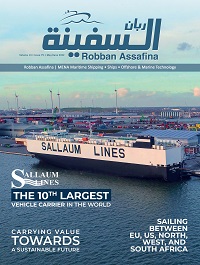IMO: Revised performance standards for EPIRBs and VDRs
The IMO has adopted Resolutions MSC.471(101) and MSC.494(104) for EPIRBs and VDRs, updating performance standards for equipment installed on or after July 1, 2022.
EPIRB
Resolution MSC.471(101) (adopted June 14, 2019) details an updated standard governing the performance of float-free emergency position indicating radio beacons (EPIRBs) operating on 406 MHz, which form part of the Global Maritime Distress and Safety System (GMDSS). The resolution standardizes the physical attributes of these devices, the ambient conditions in which they are expected to perform, as well as the technical characteristics of the transmitted signal.
Part A Updated General requirement:
- The EPIRB should be capable of transmitting a distress alert, including encoded position information from a receiver using a recognized GNSS with global coverage, to satellites equipped with a search and rescue 406 MHz processor or repeater.
- The EPIRB should be provided with a GNSS receiver for position fixes and an associated indication that GNSS signal reception is satisfactory or unsatisfactory; and be provided with an AIS locating signal in accordance with the Recommendation ITU-R M.1371, technical characteristics for an AIS using time division multiple access in the VHF maritime mobile frequency band.
- When the EPIRB is activated: the GNSS position fix shall be updated at intervals of no more than five minutes; and, when an updated fix is transmitted in the AIS message for the first time, the error between the transmitted and the actual position shall not exceed 30 m assuming a drift rate of 3 kn.
Simplified Voyage Data Recorders (S-VDRS)
Resolution MSC.493(104) (adopted 7 October 2021) recommends that S- VDRs should be constructed to minimize risk of damage during recovery operations to the same extent as that required by MSC.471(101) for float-free EPIRBs. The float-free type protective capsule should:
Be fitted with means to facilitate grappling and recovery;
Be capable of transmitting an initial satellite distress alerting signal and further locating and homing signals over a period of not less than seven days/168 hours.
Shipborne Voyage Data Recorders (VDR)
Resolution MSC 494(104) (adopted October 7, 2021) recommends that VDRs in addition to the above S-VDR requirement, the VDRs’ float-free recording medium should be installed in a float-free capsule which should:
- Maintain the recorded data for a period of at least six months following termination of recording;
- Be capable of being accessed following an incident but secure against a physical or electronically manipulated change or deletion of recorded data.
Source: Safety4sea
| Read Here | |
 |
|



































